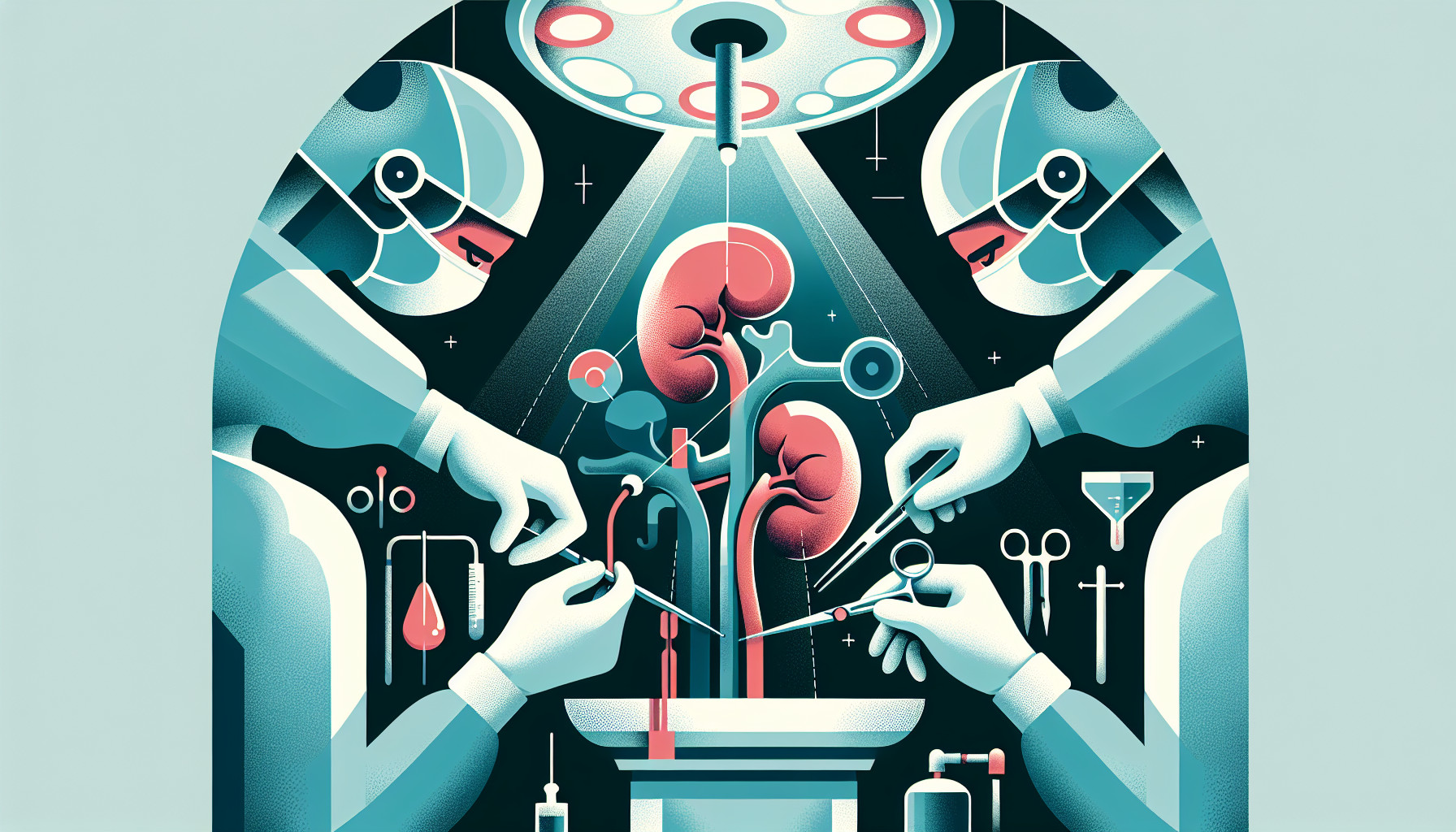Our Summary
This research paper talks about a rare complication that can occur after a specific type of kidney removal surgery (laparoscopic donor nephrectomy). This complication is called chylous ascites, which is a condition where a type of bodily fluid called chyle, leaks and accumulates in the abdomen. This can prolong hospital stays and increase the patient’s discomfort after surgery, which defeats the purpose of this less invasive surgical method.
The paper discusses how this was traditionally managed by non-surgical methods such as dietary changes and total parenteral nutrition (a form of feeding that bypasses the gastrointestinal tract). However, they found that in about 23% of cases, these methods weren’t effective and surgery was required.
Surgical methods included clip application, use of argon coagulation (a method to stop bleeding), endosuturing (a type of stitching), and the application of glue after an average of 36 days of unsuccessful non-surgical treatment. The researchers also found that patients with a large amount of fluid build-up in the abdomen, or those who needed frequent large-volume fluid removal procedures, were more likely to need surgical treatment.
The paper concludes that while non-surgical methods should be the first choice of treatment, surgery should be considered sooner in cases where there is a large amount of fluid build-up in the abdomen.
FAQs
- What is chylous ascites and how does it relate to laparoscopic donor nephrectomy?
- What are the traditional non-surgical methods for managing chylous ascites and how effective are they?
- Under what conditions should surgery be considered as a treatment option for chylous ascites after laparoscopic donor nephrectomy?
Doctor’s Tip
A helpful tip a doctor might tell a patient about laparoscopic nephrectomy is to closely monitor for any signs of complications such as chylous ascites, including abdominal swelling, discomfort, and difficulty eating or breathing. It is important to report any unusual symptoms to your healthcare provider promptly to ensure timely and appropriate management. Additionally, following post-operative care instructions and attending follow-up appointments is crucial for a successful recovery.
Suitable For
Typically, patients recommended for laparoscopic nephrectomy are those who need to have a kidney removed due to conditions such as kidney cancer, kidney stones, kidney infection, or kidney damage. Laparoscopic nephrectomy is often recommended for patients who are healthy enough to undergo surgery and who would benefit from a less invasive surgical approach compared to traditional open surgery. Patients with chylous ascites following laparoscopic donor nephrectomy may require surgical treatment if non-surgical methods are not effective in managing the complication.
Timeline
- Before laparoscopic nephrectomy:
- Patient undergoes medical evaluation to determine if they are a suitable candidate for surgery.
- Patient discusses risks and benefits of surgery with their healthcare provider.
- Patient may undergo pre-operative testing such as blood work and imaging studies.
- Patient follows pre-operative instructions such as fasting before surgery.
- Patient undergoes laparoscopic nephrectomy surgery.
- After laparoscopic nephrectomy:
- Patient is monitored in the recovery room immediately after surgery.
- Patient may experience pain and discomfort at the surgical site.
- Patient is given pain medication and instructions on post-operative care.
- Patient may experience temporary side effects such as nausea and fatigue.
- Patient is discharged from the hospital once stable and able to care for themselves at home.
- Patient follows up with their healthcare provider for post-operative check-ups and monitoring.
- Patient may experience complications such as chylous ascites, which may require further treatment including non-surgical and potentially surgical methods.
What to Ask Your Doctor
Some questions a patient should ask their doctor about laparoscopic nephrectomy include:
- What are the potential complications of laparoscopic nephrectomy, including rare complications like chylous ascites?
- How common is chylous ascites after laparoscopic nephrectomy, and what are the symptoms to watch out for?
- What non-surgical methods are typically used to manage chylous ascites, and when would surgery be considered as a treatment option?
- What surgical methods are used to treat chylous ascites after laparoscopic nephrectomy, and what are the risks and benefits of each?
- Are there any factors that increase the likelihood of developing chylous ascites after laparoscopic nephrectomy, such as the amount of fluid build-up in the abdomen?
- How will chylous ascites and its treatment impact my recovery time and overall outcome after laparoscopic nephrectomy?
- What follow-up care will be needed after surgery to monitor for any recurrence or complications related to chylous ascites?
Reference
Authors: Seth A, Sharma A, Kenwar DB, Singh S. Journal: Transplantation. 2019 Apr;103(4):e74-e78. doi: 10.1097/TP.0000000000002514. PMID: 30399121
